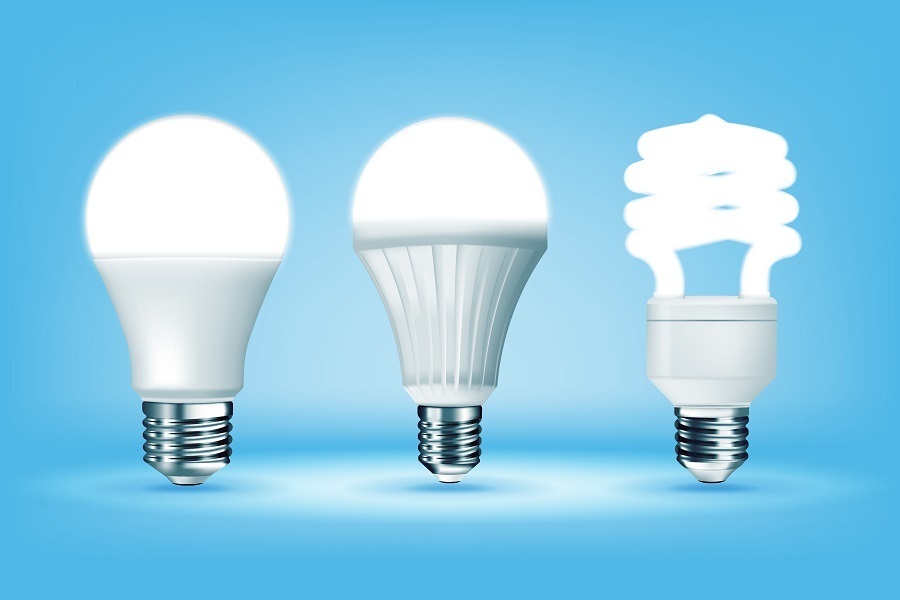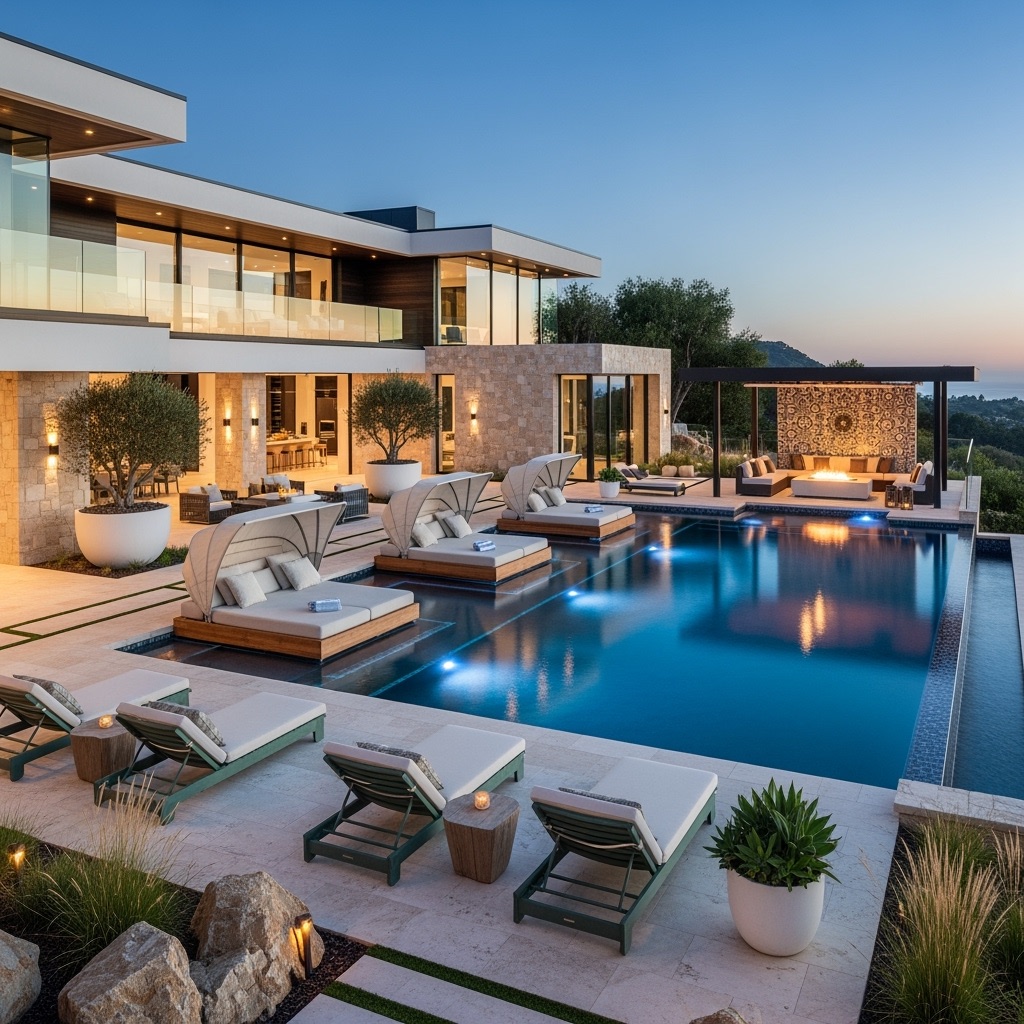Last updated on
Here’s a guide on choosing the correct wattage of light bulbs you need in every room of your home. Read on!
In a nutshell, here’s how you choose the correct wattage of a light bulb:
- Figure out how many lumens you need to light a room.
- Choose the bulb type (LED, halogen, fluorescent, incandescent.)
- Calculate how many lumens your type of bulb can create per watt.
Choosing the correct wattage of a light bulb might be confusing. There are many parameters and variables to consider. What wattage is enough to create as much light as you need? What type of bulb do you choose for your specific needs? We answer these questions and show you how to make the right choice.
You can determine the wattage for the kitchen lighting, and the wattage of the dining room lighting specifically as well. Usually, the wattage is different for every room as they need a different amount of lighting.
What's Inside
Lumens vs. Watts

When it comes to lighting fixtures, consumers commonly hear a lot of complex terms, such as watts and lumen. Most consumers think that the two are the same thing as they describe the output of a light bulb or fluorescent tubes.
It’s important to note that watts and lumens are two distinct quantities. A Watt is a unit used to measure the energy consumption of a lighting fixture, while lumens is a measure of the intensity of light produced by a light-emitting fixture.
Just because a lamp consumes more energy does not mean that it also produces high-intensity light, as the lamp’s efficiency affects the amount of light it produces.
Light Color Temperature
In addition to watts and lumens, one other quality of light that everyone should know is the light color temperature. There are warm colors as well as cool colors. Color temperature is measured in Kelvin degrees or K. The lower the K value, the warmer the color and vice versa.
If you want a daylight-type of color, you should look for lighting fixtures with the highest K values. 2400K is the warmest color, while 6500K is the coolest and brightest light.
Wattage Breakdown
Wattage is the energy consumption of a lighting fixture. The higher the wattage of a lamp, the higher the energy consumption.
It is important to note, however, that a higher wattage does not translate to increased brightness.
LED lighting fixtures are the most efficient in converting energy consumed to light, while incandescent lamps are the worst at converting energy consumed to light.
It is estimated that incandescent lamps waste 80% of the energy consumed and only use 20% to produce light. On the other hand, LED lamps convert 80% of the energy consumed to light and only waste 20% of energy.
Some LED lamps are known to be much more energy-efficient than this.
Please note that a 10 Watt LED bulb can produce as much light as a 100 Watt incandescent lamp.
Reading the Package Label Rating
Lighting products usually come with labeled packaging containing all the crucial information about the product. This includes a picture of the product.
A bulb can be a pin-type or screw type. It can run on DC or AC. The bulb’s voltage, wattage, lumens, and color temperature are all indicated on the label.
If you are trying to figure out the best wattage for a light bulb, you must read the product label before making the purchase.
It is important to note that LED lamps usually have an additional rating on the product description. You will find something like “equivalent to 100 Watts of normal light bulbs”.
In many cases, a 10 Watt LED lamp is equivalent to a 100 Watt incandescent lamp. Product labels contain all the crucial information you might need to decide whether to buy the product or not.
Types of Light Bulbs by Wattage (LED vs. Halogen vs. Fluorescent vs. Incandescent)

The most energy-efficient light bulbs are LED bulbs.
The second most energy-efficient bulbs are fluorescent lamps. Halogen and incandescent lamps are the most inefficient. Please note that incandescent and halogen lamps are usually around 20% efficient, which means that 80% of the energy they consume is wasted.
For instance, if an incandescent lamp is rated 100 Watts, only 20 Watts of this is used to produce light. The rest is radiated to the environment as heat energy.
Fluorescent lamps are much more energy-efficient than incandescent lamps. Still, they have a significant shortcoming in that they contain harmful compounds, such as mercury, which is known to be poisonous.
LED lamps have become the industry standard because of their impressive energy efficiency. A 10 Watt LED lamp can produce as much light as a 100-watt incandescent and a 36-watt fluorescent lamp.
How to Match Bulb Wattage to Light Fixtures
When matching light bulb wattage to light fixtures, there are many factors to consider. Recessed lights, chandeliers, and pendant lights are the most common in residential buildings.
Since chandeliers usually have multiple bulb holders, you can purchase numerous bulbs with low wattage and install them on the chandelier.
With recessed lighting, you should choose bulbs with a higher wattage since the bulbs will be installed high up on the ceiling, and only a limited number can be installed.
When thinking of installing pendant lights, you should choose lower-wattage bulbs because pendant lights usually hang low below the ceiling. Therefore, the intensity of light required is less. You can still install different types of light shades around the house to filter light and create the ambiance you want.
Potential Dangers
Light bulbs should be matched with bulb holders that can withstand the heat generated by the bulb.
For instance, a 100 Watt incandescent lamp usually generates a lot of heat. After all, 80% of the energy consumed is converted to heat.
To ensure the bulb holder will not heat up and get burned out, you should choose a bulb holder that can withstand the intense heat. If you need more light in the room, consider installing two or more lamps in that room.
How to Convert Lumens to Watts
Converting lumens to watts is the key to selecting the right lighting fixtures.
Incandescent lamps provide around 15 lumens per watt. LED and fluorescent lamps, on the other hand, provide 60 lumens per watt.
If you need 900 lumens of light in a room, therefore, you can choose either a 15 Watt LED lamp or a 60 Watt lamp, as this can illuminate the room efficiently.
How to Determine Light Bulb Brightness
Light bulb brightness is usually indicated on the product label or even the bulb itself. This can be given in lumens. In case the lumen rating is not given, you can do some calculations to determine the brightness of the light bulb. If you have an LED lamp, you should multiply the wattage by 60 to find the number of lumens it can produce.
Can You Put in a Higher Watt Light Bulb Than What Is Recommended?
As a property owner, you can do whatever you want. Still, for safety reasons and also to make your home more energy-efficient, it is recommended that you only install the recommended bulbs. If you install a bulb with a higher wattage, you risk burning up the lighting fixtures and shorting the electrical wiring circuit in the house.
What Type of bulb Conserves Lighting Energy?
If you want to conserve energy to reduce your carbon footprint, you should install LED lamps as they are the most energy-efficient.
What Voltage Bulb Should You Use?
This will depend on the voltage of the grid and the type of supply voltage. You may need to buy bulbs with a 12V DC rating if using direct current. In the case of alternating current, the voltage can range from 130k volts to 240 volts. Just confirm the voltage in your home and buy bulbs that match that voltage.
FAQ
An average bedroom of 200 square feet should be lit with at least 3,500 lumens. Four 10-watt LED light bulbs can produce as much lighting.
An average bathroom of 40 square feet should be lit with at least 3,000 lumens. Three 10-watt LED light bulbs can produce as much lighting.




